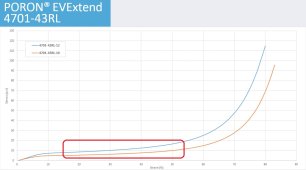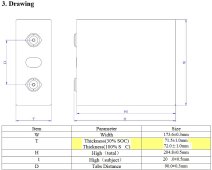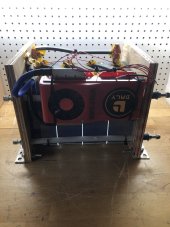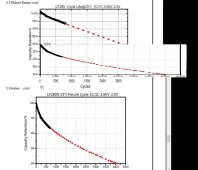Since I helped
derail this conversation, I suppose its fair that I
rerail it. There have been many fragmented and scattered conversations on cell compression/fixture, some more current than this one, but since
this is where I originally pointed out the relationship between fixture and cycle life in the EVE spec sheet, it seems as good a place as any to report some new-to-me information that I happened across while researching low temperature charging that may finally help explain and contextualize the 300kgf figure. I will also try to summarize and bring together the various bits and pieces of information scattered throughout a half dozen threads here (with references and links).
There are a pair of ongoing discussions on low temp charging going on
here and
here. I brought up a chart from
a video by Ian George I had seen a few times a while back that has some useful info on low temp charging in the first few minutes. On this occasion I let it play through to the and had an 'aha moment' during the last slide where he discusses optimal pressure for pouch cells. Looking at the chart, I noticed it was 12 PSI, now most people are familiar with the 300kgf figure, but some may remember a while back
we converted that figure to PSI, specifically..., 12 PSI.
@BiduleOhm confirmed my calculations, and
@Luthj came to the same conclusion independently in the Xuba thread.
300kgf = 661lbf = 2942N = 12psi spread across the broadside of an EVE cell.
@ghostwriter66 is
reaching out to EVE tonight, to try to get further clarification,
we shall see. (we see:
here and
here
The video referenced earlier explicitly states not to focus on the specific numbers but to focus on the concepts and trends being illustrated, and I want to reiterate that advice. But I still can't help but notice that both reference 12psi. Sticking to the creators advice though, conceptually, both the
relevant sections of EVE spec sheet, the
e-mail response @Gazoo was able to get from an EVE rep, and the
info in the video referenced above all seem to point to the same thing. Some amount of pressure is good for the life of the cells.
This article posted by
@Luthj alludes to the same conclusion, and is briefly touched on
in this comment and
this comment
In terms of
why pressure is beneficial, I won't try to explain--watch the video, and read
this comment--but the basic idea is that uniform pressure across the case is good for the internal 'jelly roll' or in the case of the video the pouch cells which lack external structure.
My theory, and this is speculative, of why its the large form factor aluminum cells that seem to be the ones most likely to explicitly recommend compression (EVE 280, Lishen 271) is that as cells get larger, and surface area increases, the exterior structures of the cells--particularly the broad sides--are increasingly in need of external structure/form. It is worth noting
CALB cells also recommend "clamping" but do not elaborate beyond that.
Attached are the relevant sections of the EVE spec sheet, a screenshot of Gazoo's e-mail exchange with EVE, a screenshot from the referenced video, and an X-ray image of a 'jelly roll'
Here are some threads and posts on the topic:
EVE 280Ah LiFePO4
Xuba Megathread
CALB Grey Cell Compression Casing
EVE LF280 Charge Cutoff Voltage
Best Ways to compress Cells in Pack
EVE Cells Should these be Clamped Tight or Spaced for Expansion
...Some examples of compression







